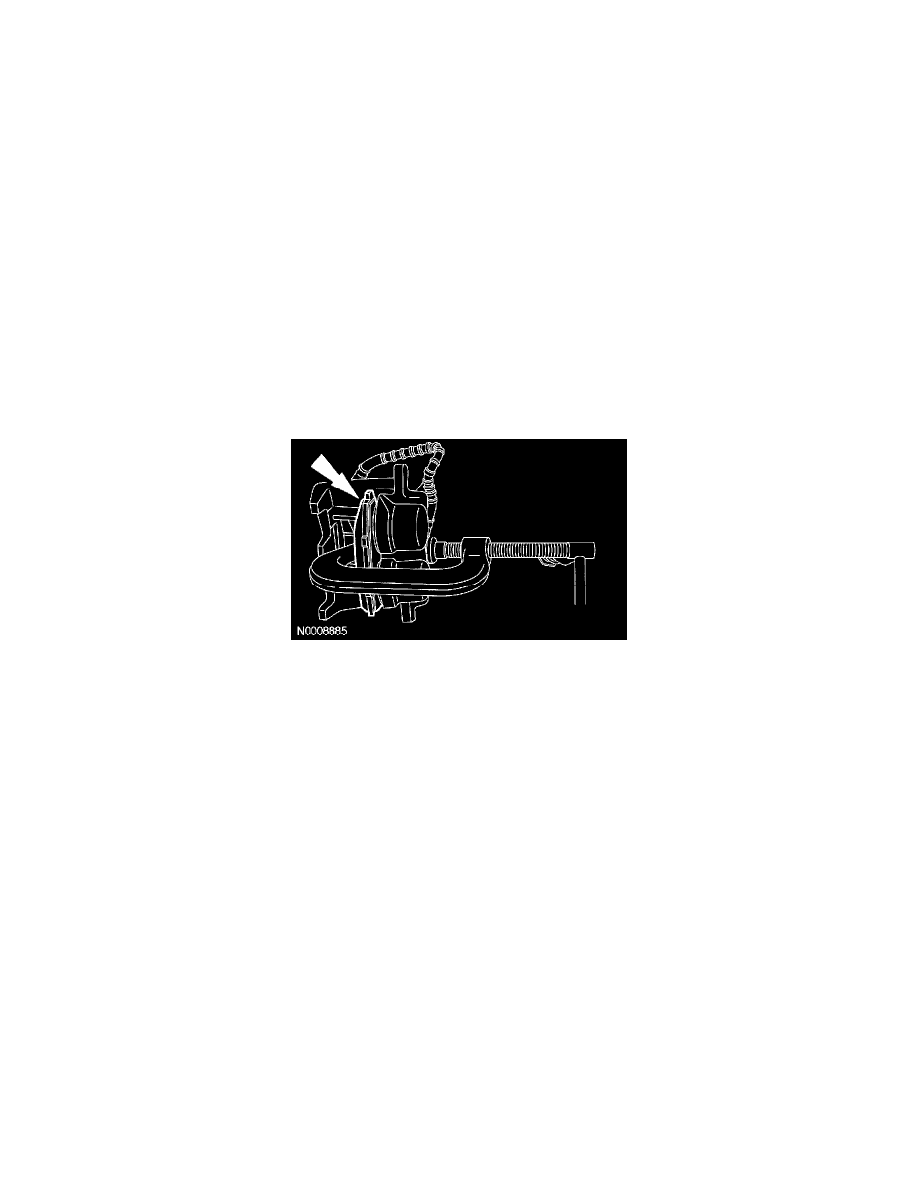F 550 2WD Super Duty V8-6.0L DSL Turbo VIN P (2006)

3. CAUTION: Do not pry in the caliper sight hole to retract the pistons, as this can damage the pistons and boots.
CAUTION: Do not allow the brake caliper to hang from the brake caliper flexible hose. Use a suitable tool to support the brake caliper.
Remove the 2 brake caliper bolts and position the caliper aside.
4. CAUTION: Install new brake pads if they are worn past the specified thickness above the metal backing plates. Install new brake pads in
complete axle sets.
Remove the 2 brake pads and inspect for wear or contamination. If equipped, remove the 4 retraction clips.
^
Discard the retraction clips.
^
Inspect the brake pads for wear and contamination.
5. Measure the front brake disc thickness.
^
Install a new front brake disc if it is not within specification.
Installation
1. CAUTION: Do not allow grease, oil, brake fluid or other contaminants to contact the pad lining material. Do not install contaminated pads.
NOTE: If installing new brake pads, install all new hardware as supplied with the brake pad kit.
Install the 4 new retracting clips and the 2 brake pads.
2. CAUTION: Protect the piston and boots when pushing the caliper piston into the caliper piston bores.
If installing new brake pads, using a suitable tool and a worn brake pad, compress the disc brake caliper pistons into the caliper.
3. CAUTION: Tighten the bottom caliper bolt before tightening the top caliper bolt
CAUTION: Make sure the caliper pin boots are correctly seated to prevent damage to the guide pins.
Position the brake caliper and install the 2 bolts.
^
On F-250, F-350, tighten to 76 Nm (56 ft. lbs.).
^
On F-450, F-550, tighten to 63 Nm (46 ft. lbs.).
4. Fill the brake master cylinder reservoir with clean brake fluid.
5. Test the brakes for normal operation.
